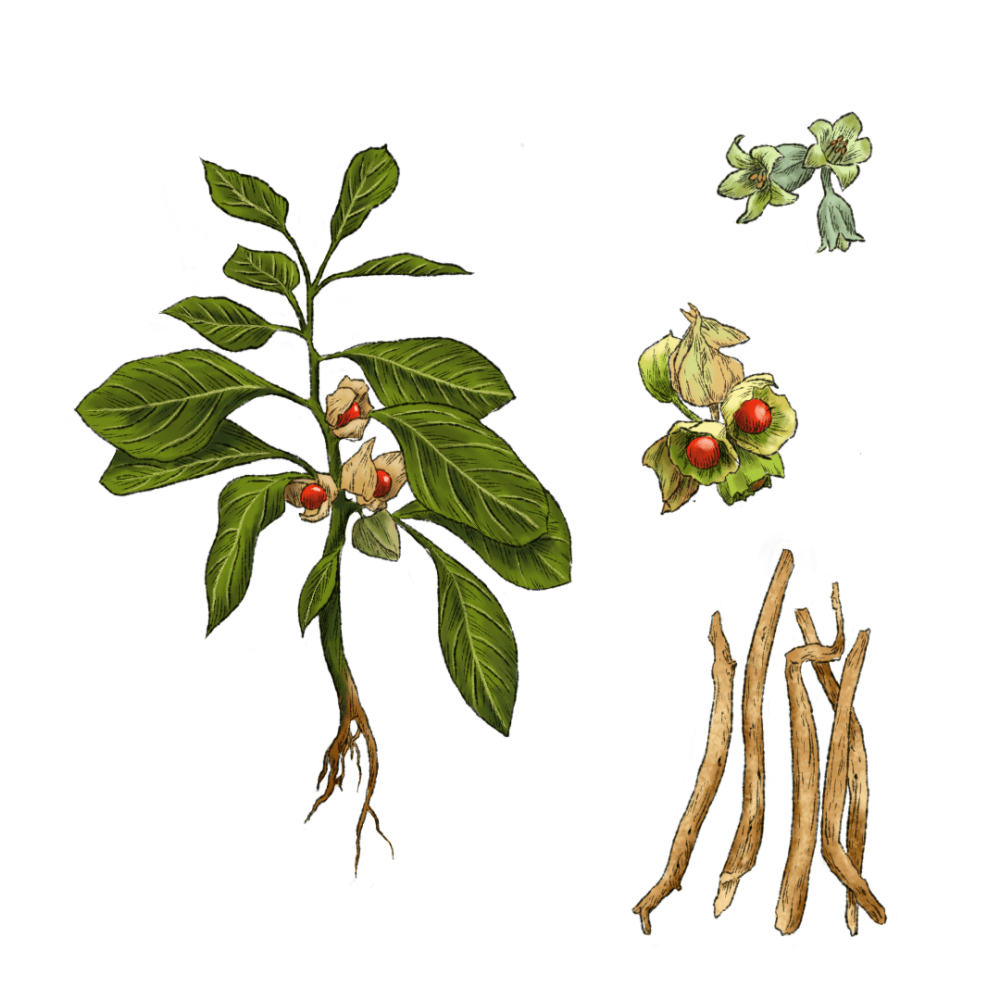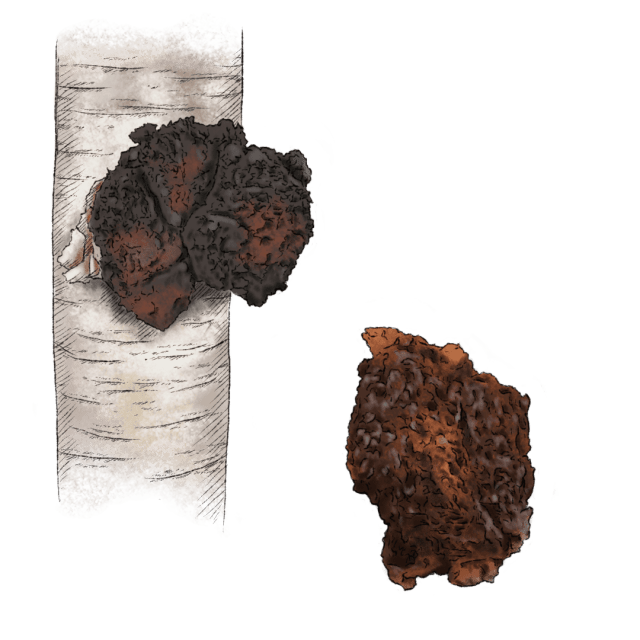Ashwagandha

Ingredient: Ashwagandha
Latin name: Withania somnifera
Other names: Indian winter cherry, Indian ginseng, aasogandha, aswangandha, amukkara
Uses: adaptogen, herbal decoctions, tonic, diuretic
What is ashwagandha?
Ancient Indian sages gave horsepower a whole new meaning with ashwagandha, a medicinal plant of the nightshade family. The word “ashwagandha” originates from Sanskrit, with “ashwa” meaning horse and “gandha” meaning smell, as the root of the plant has a strong, horse-like scent. Celebrated by herbalists and mythologists alike for its thermogenic potency and stress alleviating properties, ashwagandha has been used in Ayurvedic medicine for centuries as a “rasayana” or a plant promoting physical and mental health, stamina, and rejuvenation.
Why is ashwagandha healthy?
Ashwagandha is used as an adaptogen: its anti-inflammatory and antioxidant effects can help the body adapt to stress. It also contains alkaloids, steroidal lactones, and anti-stress agents.
In some studies, ashwagandha has been found to help brain function, especially concerning neurodegenerative disorders like dementia, Alzheimer’s, and Parkinson’s diseases. Other small trials have found ashwagandha to be assist in lowering blood glucose levels and triglycerides.
Ashwagandha is also used as an herbal supplement for strength and vitality and, in some cases, as an aphrodisiac in India. The “somnifera” part of its Latin name alludes to its sedative capabilities, so it may help improve sleep as well.
What does ashwagandha taste like?
Ashwagandha has a somewhat bitter, astringent, and pungent taste, with a slightly sweet and earthy flavor.
How do I prepare and use ashwagandha?
Typically consumed in the form of a dried root powder or its extract, ashwagandha is often mixed with other ingredients to mask its strong, slightly unpleasant taste. It is also used as a nerve and liver tonic by some Indian herbal doctors. Research shows that the roots in tonic and powder form have stimulating and adaptogenic characteristics. Indian herbalists make a paste from the leaves to impart antibiotic and anti-inflammatory properties, while the ground seeds are used as a diuretic.
Indian folk remedies call for a mix (a churna powder) of dried ashwagandha root with water, ghee, or honey. When combined with warm milk, this mixture is given to children to bolster their strength and for adults with insomnia. New age herbalists add ashwagandha powder and extracts to teas, infusions, smoothies, and energy balls. You’ll also see it as a dietary supplement in capsule form.
Teas are often an easy way to start consuming ashwagandha and then you can add it in dried powder form directly to foods such as smoothies, nut butters, or overnight oats. It’s therapeutic benefits are not heat stable at high temperatures so try to avoid adding it to any high-heat cooked items.
Where does ashwagandha grow?
Ashwagandha is widely grown and consumed in the Indian sub-continent and surrounding arid and semi-arid parts of Asia and Africa. This undershrub grows straight and tall, sporting greenish yellow flowers and red berries.
Fun ashwagandha fact:
Rama, the hero of the epic Ramayana, held the Ashwamedha yagna, a sacrificial fire ritual invoking equine power. A magnificent horse magically arose from the fire and the blessed beast was revered as a symbol of stamina, virility, and courage.









